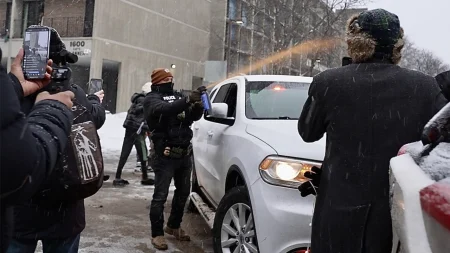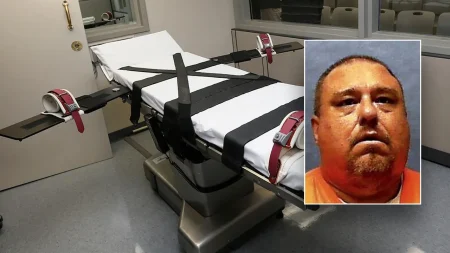Deadly Crossfire: North Kordofan Becomes Latest Battleground in Sudan’s Escalating Civil War
Civilian Casualties Mount as Strategic Region Faces Military Buildup
In the early morning hours yesterday, residents of El Obeid, the capital of North Kordofan state, awoke to the sound of heavy artillery and small arms fire as the latest chapter in Sudan’s devastating civil conflict unfolded. The attack, which claimed the lives of at least 17 civilians and left dozens wounded, represents a significant escalation in a region that had previously been spared the worst of the fighting that has torn apart much of the country since April 2023. According to local medical sources speaking on condition of anonymity, hospitals in the area are overwhelmed with casualties, many suffering from injuries consistent with high-caliber weapons and shrapnel wounds.
“We heard the explosions just after dawn prayers,” recounted Ibrahim Mahmoud, a 54-year-old shopkeeper whose store was partially destroyed in the attack. “There was no warning. The fighting moved through our neighborhood like a storm, and we had nowhere to run.” Mahmoud’s experience echoes that of thousands across North Kordofan, a strategically important state that connects Sudan’s capital region to its western territories. The attack marks a troubling expansion of the conflict zone as both the Sudanese Armed Forces (SAF) and the Rapid Support Forces (RSF) paramilitary group intensify their struggle for territorial control in what analysts describe as an increasingly fragmented nation.
Strategic Significance Drives Military Buildup in Once-Peaceful Region
North Kordofan’s relative stability had made it a crucial logistics hub and refuge for displaced persons fleeing conflict zones in Darfur and Khartoum. However, military experts monitoring the situation have observed a steady buildup of forces in the region over the past three months, with both sides positioning heavy weapons, armored vehicles, and combat-ready troops along key transit corridors. “North Kordofan represents a critical juncture in Sudan’s transportation network,” explains Dr. Amina Osman, conflict analyst at the Institute for Security Studies in Addis Ababa. “Whoever controls this territory essentially controls movement between eastern and western Sudan, making it an inevitable flashpoint in this power struggle.”
The military buildup has transformed previously peaceful agricultural communities into forward operating bases. Satellite imagery analyzed by international monitoring groups confirms significant military construction activities along major highways and near population centers. Local authorities report the commandeering of civilian infrastructure, including schools and community centers, for military purposes. This militarization has disrupted the agricultural cycle in what was once considered Sudan’s breadbasket, raising additional concerns about food security in a country already facing acute hunger crises. The UN World Food Programme estimates that nearly 40% of North Kordofan’s population now faces moderate to severe food insecurity, a dramatic increase from pre-conflict levels.
Civilian Population Caught Between Warring Factions
As military and paramilitary forces jockey for control, North Kordofan’s 2.9 million residents find themselves trapped in an increasingly dangerous situation. “We are not participants in this conflict, yet we bear its heaviest burden,” says Fatima Abdelrahman, director of a local humanitarian organization assisting displaced families. “Each day brings new stories of civilian casualties, destroyed homes, and communities torn apart by violence they neither started nor support.” The situation is particularly dire for those already displaced from other conflict zones who had sought refuge in North Kordofan’s previously safe environs.
Healthcare infrastructure, already strained before the conflict, now stands on the brink of collapse. Dr. Mohammed Salih, speaking from El Obeid Teaching Hospital, describes critical shortages of essential medications, surgical supplies, and blood products. “We are performing complex trauma surgeries with minimal resources,” he says. “Many patients who could survive with proper care are dying simply because we lack basic supplies.” International medical organizations have attempted to deliver emergency aid to the region, but security concerns and bureaucratic obstacles have hampered these efforts. Reports from medical facilities throughout North Kordofan indicate that approximately 60% of healthcare facilities have either been damaged in fighting or abandoned due to security concerns.
Regional Implications and International Response
The deteriorating situation in North Kordofan carries significant implications not only for Sudan but for the broader Horn of Africa region. Neighboring Chad has reported a surge in refugee arrivals from western Sudan, while South Sudan faces increased pressure on its northern border. “This conflict is creating ripple effects throughout an already volatile region,” notes Ambassador Thomas Eriksson, UN Special Envoy for the Horn of Africa. “The international community must recognize that Sudan’s stability is integral to regional security.”
Despite repeated calls for de-escalation from the United Nations Security Council and regional bodies like the African Union, meaningful international intervention remains limited. Diplomatic efforts led by various international mediators have thus far failed to produce lasting ceasefires or political solutions. Humanitarian organizations continue to advocate for protected corridors to deliver essential aid, but implementation has proven challenging in contested territories like North Kordofan. “We’re witnessing the systematic destruction of civilian infrastructure and livelihoods,” says Helena Rodriguez, emergency coordinator for Médecins Sans Frontières. “This is not collateral damage—it appears increasingly to be a deliberate strategy employed by all sides in this conflict.”
Looking Forward: Uncertain Prospects for Peace in a Fractured Nation
As North Kordofan becomes the latest casualty in Sudan’s civil war, prospects for peace appear increasingly distant. Military analysts predict continued fighting as both the army and paramilitary forces attempt to strengthen their negotiating positions through territorial gains. The agricultural heartland that once fed much of Sudan now faces not only immediate violence but long-term economic devastation. “Even if fighting stopped tomorrow, the damage to infrastructure, displacement of skilled labor, and disruption of agricultural systems would take years to reverse,” explains economist Dr. Yasir Ibrahim of the University of Khartoum.
For ordinary Sudanese caught in the crossfire, such long-term considerations offer little comfort amid daily survival challenges. Community leaders in North Kordofan have attempted to establish local ceasefires and civilian protection zones, but these grassroots initiatives struggle against the momentum of national conflict dynamics. “We are not powerless, but our voices are drowned out by gunfire and political rhetoric,” says Sheikh Abdul Gadir, a religious leader coordinating interfaith protection efforts in El Obeid. As another night falls over North Kordofan, residents prepare emergency supplies and reinforced shelters, knowing the morning may bring another round of violence in a conflict that has already claimed thousands of lives and displaced millions across Sudan. The military buildup continues unabated, transforming this once peaceful agricultural region into the latest battleground in Sudan’s tragic descent into civil war.








